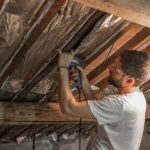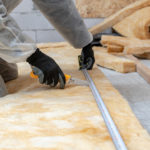The Easy Crawl Space Maintenance Plan for Your Home
If you have a crawl space, you know that then keeping it clean and well maintained promotes your health and preserves the structure of your home. But we must agree that the crawl space is often neglected with many homeowners not knowing how to maintain it. Find out the easy crawl space maintenance plan for your home.
Why Should You Inspect Your Crawl Space?
When you ignore your crawl space, you’re creating the ideal environment for a wide variety of problems to thrive. Needless to say, correcting such problems costs colossal amounts of money and reduces the efficiency of your home. Of course, many homeowners don’t like accessing the crawl space but doing regularly is necessary.
Did you know that neglecting your crawl space can escalate problems across the entire room? If your crawl space is dirty and unkempt, you’re likely to notice increased humidity or dampness in your living area. In extreme cases, you’ll even see mice popping out of your cupboards or even spot signs of mold. Within no time your utility bills will start rising and this will become a major cause for concern.
Nature and wear and tear in your home is the main reason why you should inspect and conduct maintenance on your crawl space regularly. The best thing is that nearly all crawl space problems can be prevented if you adopt good inspection and maintenance practices.
Some of the problems you need to watch out for include:
- Moisture and Water. Excessive moisture in your crawl space results in mildew and mold infestation. Inspect your plumbing system for any leaks and have them repaired where necessary. Remember, water can destroy the wooden structures and the insulation in your home.
- Pests and rodents. Look out for various pests such as cockroaches, water bugs, or termites. Other pests and rodents may access your crawl space and eventually penetrate inside your home when some of the structures in your home become wet and start rotting away. Increased moisture can attract a wide range of termites which thrive in damaging wooden structures.
Rodents too may find their way to your home through the crawl space. These include squirrels, raccoons, and rats. Once such rodents find hostage in your home, they’re likely to reproduce and become a menace in your home by chewing on clothes, electrical wiring, and other valuables, while compromising your health.
- Electrical, plumbing, heating, and cooling problems. Are you experiencing any problems with these systems in your home? If the answer is yes, then you need to inspect your crawl space to establish where the problem is emanating from. You can make major savings by establishing the problem early in advance.
- Insulation Problems. Does your floor feel warm during summer and cold in winter? If yes then that could be an indication that your insulation has either been damaged by rodents or has fallen off due to wetness. You should inspect the crawl space as soon as possible and conduct the necessary repairs.
- Excessive Rain, Flooding, or snow. Whenever there are extreme weather conditions, moisture, and water can penetrate through your crawl space and cause major problems.
Tips to Help You with Your Crawl Space Maintenance Practice
Here are easy tips you can try in order to keep your crawl space clean and dry.
Prevent Moisture
Moisture control is a major step if you want to maintain a clean, safe, and dry crawl space.
Studies suggest that the area around and below your home comprises moisture which in normal circumstances evaporates back to the environment. However, sometimes this doesn’t happen and this leads to an accumulation of moisture which forms clear water droplets. Now, the problem begins when the water collects near wood making it a breeding ground for mildew and mold.
If you don’t do something about it, then mold problems can escalate and even damage the structural form of your home. If you want to effectively control your moisture, then you should start by inspecting your building’s envelope and correcting any problems accordingly. For instance, you can install gutters across your roof to keep water away from the foundation of your home. If you have impractical gutters, then you may want to try an alternative method such as setting the soil right outside your home to ensure that it slopes hence directing water away from your house.
Inspect and Clean Your Crawl Space from the Inside
Once you’ve removed all external moisture sources, proceed to evaluate the crawl space from the inside. If your dirt floors are exposed, you may want to seal them using a moisture-resistant material such as polyethylene. Studies suggest that crawl spaces that have dirt floors can cause humidity based problems. The worst thing is that they can be bug-infested and this compromises your comfort inside your home.
Clean your crawl space regularly to keep moisture at bay and also maintain cleanliness. If you establish that your crawl space is already affected by moisture, you need to call in a professional crawl space cleaning agent to assist help you find a lasting solution. You should be concerned especially if you notice a pool of water in the crawl space. Conduct a professional immediately and they’ll be able to offer appropriate solutions.
Bar Rodents and Ventilate the Crawl Space
Once you’re done cleaning the crawl space, the next step involves maintaining the cleanliness. You may want to start by blocking any gaps or open spaces through which rodents can penetrate your crawl space. Remember to seal even the smallest cracks because they can be access points for pests and even rats. Whatever you do, ensure that the crawl space is still well aerated enough to breathe. Some of the best forms of ventilation are laminated water vapor barriers. These will not only keep pests at bay, but they’ll also allow your crawl space to vent.
Insulate the Crawl Space
Once your water vapor barriers and vents are in place, proceed to insulate your crawl space. There are numerous forms of insulation but fiberglass batts are the popularly used crawl space insulation methods. You can even install them between floor joists and even though they’re effective, you may consider using them in collaboration with spray foam insulation.
One thing you should know about spray foam insulation is that it’s expensive but can seal your crawl space tightly to protect it from air movement and heat transfer. The advantage of using spray foam insulation is that you only need to use a thin layer to fill the crannies and nooks in your crawl space. Further, using it with fiberglass makes your home warm during winter, and cold in the summer. Spray foam is also good because it’s resistant to moisture which means that it’s not a breeding space for mold.
When Should You Inspect Your Crawl Space?
The appropriate time to conduct thorough inspection and maintenance on your crawl space is during spring. This is because the temperatures are neither extremely hot nor cold. While you may discover problems, you may not establish their cause.
If that’s the case, you should either call in a professional crawl space expert or proceed to inspect your crawl space in different weather conditions such as during the rainy season just to test whether it could be the source of water in the crawl space. Another appropriate time to inspect your crawl space is during fall just before the onset of winter.
Finally
The right insulation will not only insulate your crawl space, but it keeps your entire home well insulated. Remember, that poorly insulated crawl spaces can result in high utility bills especially during summer and winter. This is because they force the heating and cooling systems to work extra harder to confine warm or cold air within the home. Contact an expert for crawl space maintenance.


